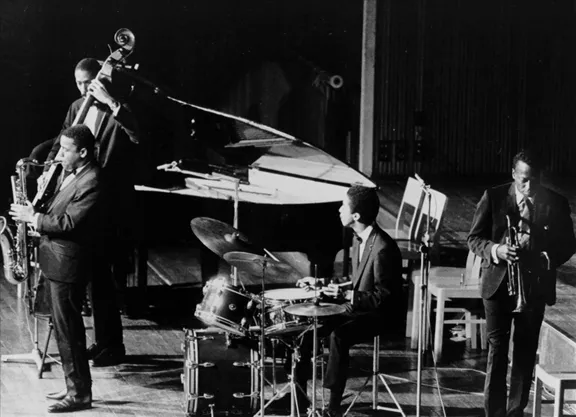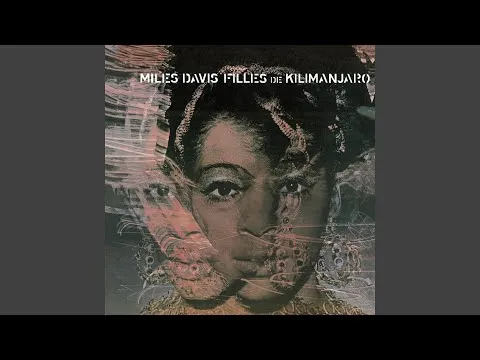Wayne Shorter (tenor sax), Miles Davis (trumpet), Herbie Hancock (Fender Rhodes electric piano), Ron Carter (electric bass) and Tony Williams (drums). From the album Filles de Kilimanjaro (1969).
The Miles Davis Quintet that toured Europe in 1967 was fantastic, especially when Davis was in good shape. These musicians invented all kinds of strategies to adapt the music on the fly and cover each other if they lost control. Their versions of the main themes changed every night. Hancock or Carter could modify the harmony or structure of a melody in the middle of a concert knowing that the others would follow.

Williams readjusted the tempos and created drastic variations in sound and silence, raising and lowering the intensity of his performances. As exceptional as these musicians were individually, the manner they worked together made all the difference. Groups usually extend more when playing live than in the studio, but these artists also altered the tracks in the studio after listening to them for the first time. These concerts are full of purposeful distortions, uncertainties and contradictions, and subtly strange movements.

The rhythm section makes a long, smooth and bluesy introduction, and then Shorter and Davis come in to expose the theme in unison at medium-slow tempo. Then the rhythm section is left alone for a while and next Davis enters to make his solo. He plays short phrases with authority and confidence while Hancock accompanies him with broken chords. He is followed by Shorter also with an intermittent melodic line and makes filigrees once in a while. Now it’s Hancock’s turn, who delivers a dynamic and inspired speech. To finish, the group plays a different and longer theme and the rhythm section stays by themselves until they end.
© Columbia Records

